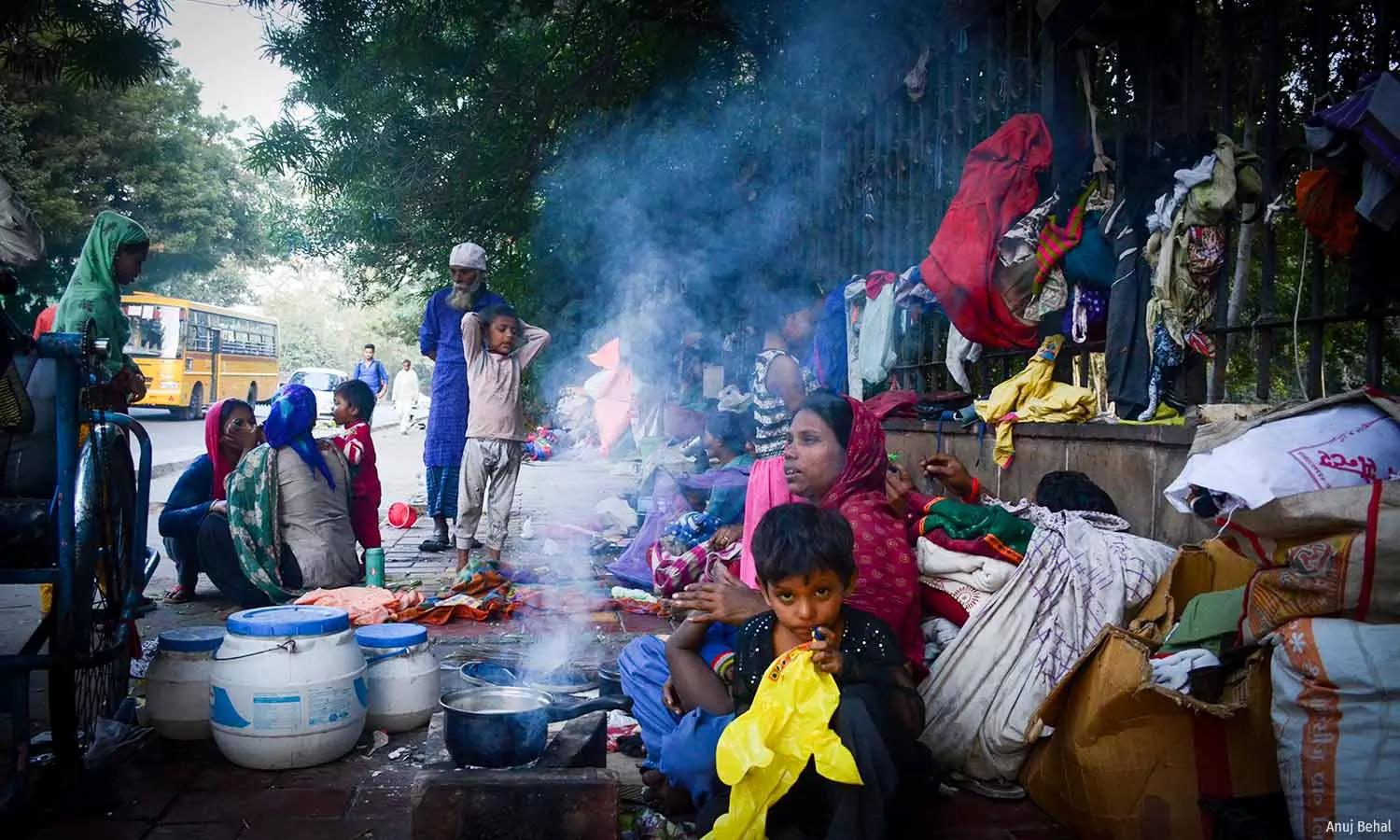DataViz: How Delhi’s Homeless Population Experiences Summers
A spatial analysis of Delhi’s land surface temperature juxtaposed with its homeless clusters reveals that while homeless people are concentrated around the central parts of the city, many of the areas being secondary heat islands

New Delhi: Homeless persons in Delhi are concentrated in the city’s central parts, which have a relatively lower land surface temperature overall, compared to the industrial zones on its peripheries, but include several secondary heat islands exacerbating the experience of summers for those living on the streets of the national capital. As the country braces for yet another intense summer, with projections of extreme heat and more heatwave days, these findings are vital to city and state authorities to take mitigating measures.
According to independent experts and estimates, in Delhi, at least 200,000–250,000 individuals live in homelessness, including women, children, transgender persons, older individuals, persons with disabilities, and other vulnerable groups. The Delhi Urban Shelter Improvement Board (DUSIB), the principal agency addressing homelessness in Delhi, operates a network of 195 shelters, including 82 permanent structures in existing government buildings, 103 porta cabins made from tin sheets, and 10 shelters constructed under a ‘special drive’. Despite these efforts, the overall capacity of these 195 shelters is around 16,675 beds, about 92% below the estimated population of homeless persons in the city.
A study by the Housing and Land Rights Network in Delhi delved into the impact of extreme heat on the city's homeless population, mapping their clusters across key areas. Overlaying these clusters with land surface temperature maps of Delhi, the analysis employs data from the United States Geological Survey (USGS), utilising Landsat 8 operational land imagery/thermal infrared sensor (OLI/TIRS) satellite imagery. Regions with high temperatures are depicted in bright red tones on the map, gradually transitioning to yellow as temperatures decrease.
Credit: Housing and Land Rights Network
Major homeless clusters are predominantly situated around central parts of the city, where commercial centres and work opportunities are concentrated. For instance, many homeless persons reside in the central parts of Yamuna Pushta due to its proximity to employment opportunities, as the area serves as a vital labour hub. Similarly, areas such as Nizamuddin are significant nodes, owing to the presence of religious centres where charity is distributed to those in need.
Temperatures are relatively lower in these areas compared to external peripheries which house the industrial zones, the analysis shows. However, this does not imply that these areas are devoid of high temperatures. Locations like Asif Ali Road, Chawri Bazar, Anand Parbat Industrial Area, and Sadar Bazaar in northeast Delhi; Badarpur and Jaitpur in the south; and Shahdara near the banks of the Yamuna River and in the city’s southeast are secondary heat islands, characterised by land surface temperatures ranging from 40-45°C. Despite the extreme heat, homeless individuals gravitate towards central nodes due to limited options for sustenance.
Pockets of the city exhibiting very high land surface temperatures were found to coincide with industrial zones primarily located in the north and southwest. Prominent heat islands, such as Najafgarh, Dwarka, Naraina, Rohini, Mundka, Bawana, and Narela, were identified based on their elevated land surface temperatures.
How extreme heat affects the homeless
While the effects of extreme heat are evident on the human body, the adverse impacts on homeless individuals are even more pronounced, IndiaSpend reported in February 2024. Nearly everyone (99% of individuals) living on the streets, in a survey during May-June 2023 covering 102 homeless persons in the city, reported experiencing sleeplessness.
The effects of heat on the homeless population include heatstroke, weakness, an increase in vector-borne diseases, eye-related problems, diarrhoea, skin issues such as rashes and irritation, restlessness, difficulty in breathing, nausea, dizziness, vomiting, dehydration, elevated blood pressure, headaches, fever, coughing, cholera, frequent nosebleeds, loss of appetite, stomachache, and infections. Elevated temperatures and increased number of vectors--which can transmit infectious pathogens--compound the challenge of finding adequate outdoor sleeping arrangements, concurrently heightening health risks from food spoilage and contamination.
Compounded by limited incomes and inadequate shelter, mitigating these challenges poses yet another obstacle. Homeless individuals resort to makeshift measures such as using tarpaulin, taking frequent showers, and seeking shade near trees and parks to alleviate the impact of extreme heat.
Delhi released its heat action plan last year, which identified the most vulnerable areas to heat stress through a vulnerability index. This index considers factors such as sanitation, water, electricity, health, transportation, housing, cooking, awareness, and heat symptoms. The plan pinpointed 10 hotspots with the maximum heat stress: Jahangirpuri, Prem bari bridge (near Azadpur Mandi), Shakoor ki dandi, slum in Khayala, Mayapuri slum, Indira Kalyan Vihar, Sanjay Colony, Vishwas Nagar, and Buland Masjid slum.
Analysing the cumulative ward-wise heat wave vulnerability, nearly six wards in Delhi emerged as highly vulnerable, lacking basic amenities to cope with heat waves. These areas are also home to a significant concentration of homeless people, emphasising the government's need to provide strategic relief. However, while the plan outlines strategies to mitigate heat-wave impacts, it does not address or accommodate the specific needs of homeless individuals or recognise them as a particularly vulnerable group during heat waves.
We welcome feedback. Please write to respond@indiaspend.org. We reserve the right to edit responses for language and grammar.


